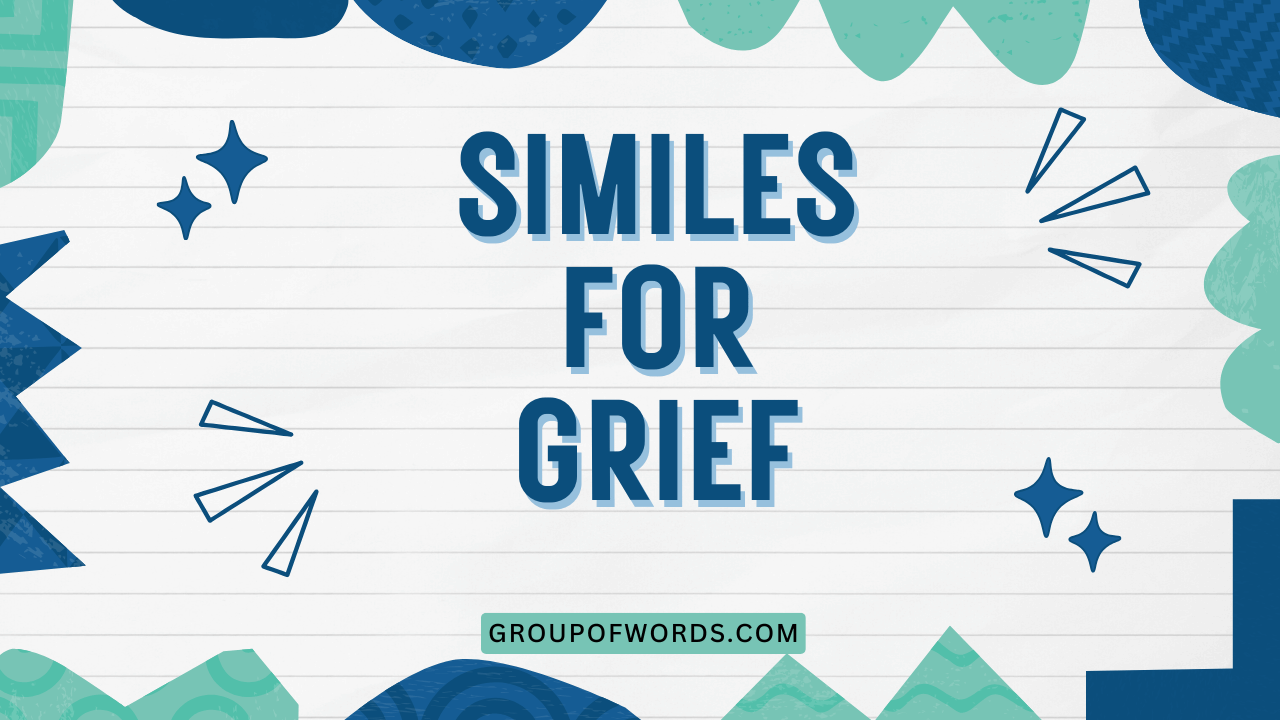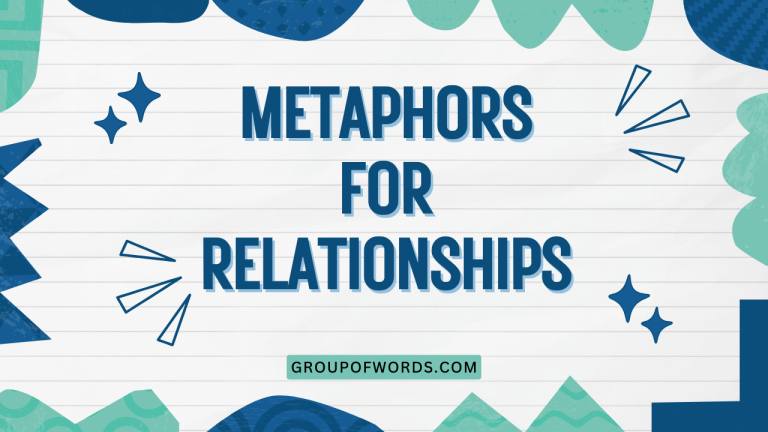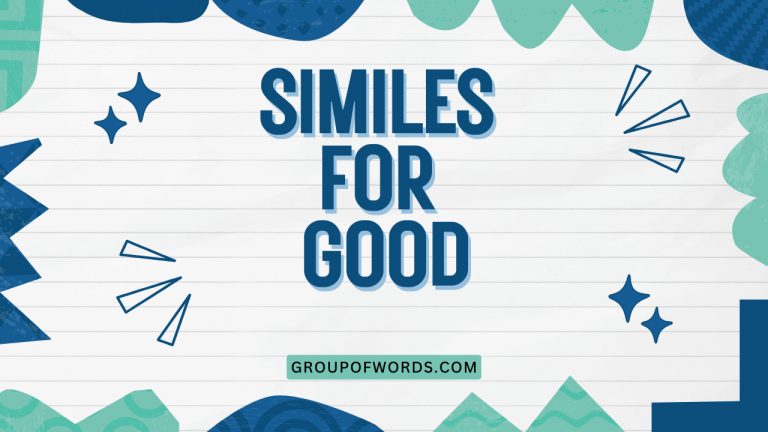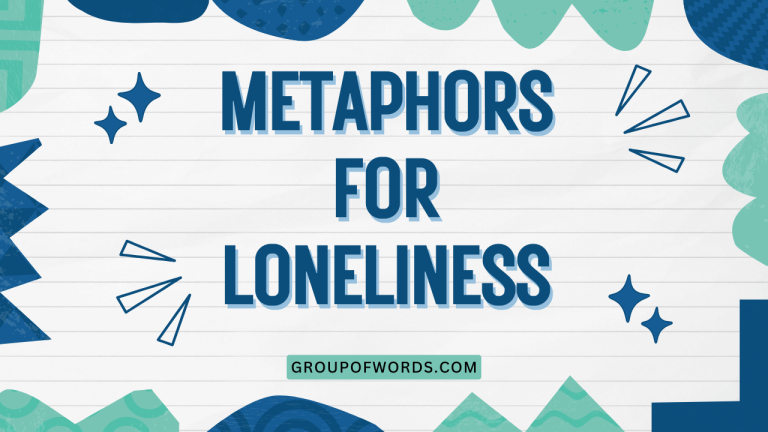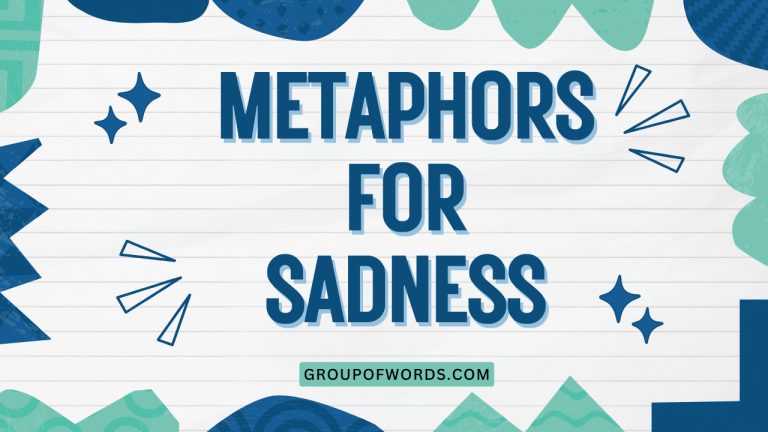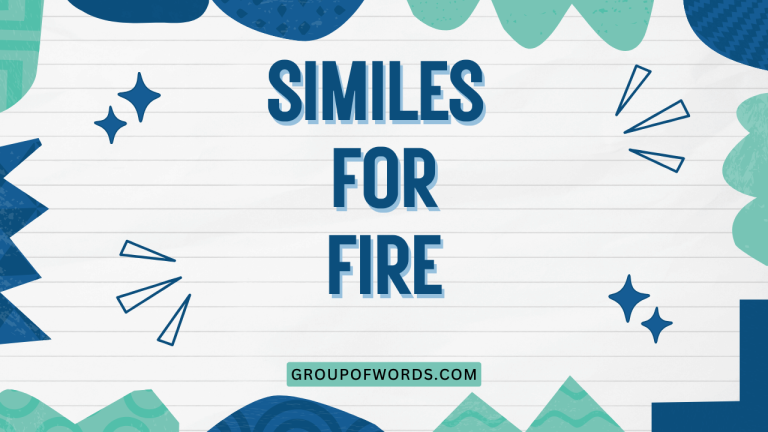Similes for Grief: Understanding and Using Figurative Language
Grief is a complex and deeply personal emotion, often difficult to articulate. Similes, a powerful tool in the English language, provide a way to express the intensity and nuances of grief by comparing it to something else.
Understanding similes for grief enhances our ability to communicate empathetically and appreciate the depth of human emotion in literature and everyday conversation. This article explores the definition, structure, types, and usage of similes for grief, offering numerous examples and practical exercises to help you master this expressive literary device.
This knowledge is beneficial for writers, students, therapists, and anyone seeking to better understand and express the experience of grief.
Table of Contents
- Definition of Similes for Grief
- Structural Breakdown of Similes
- Types of Similes Used for Grief
- Examples of Similes for Grief
- Usage Rules for Similes
- Common Mistakes When Using Similes
- Practice Exercises
- Advanced Topics in Similes
- Frequently Asked Questions
- Conclusion
Definition of Similes for Grief
A simile is a figure of speech that compares two unlike things using the words “like” or “as.” It’s a powerful tool for conveying complex emotions, such as grief, by relating them to more tangible or relatable experiences. Similes help us understand the abstract nature of grief by drawing parallels to something concrete.
The function of a simile is to create a vivid image in the reader’s mind, making the emotion more accessible and understandable. In the context of grief, similes can illustrate the pain, emptiness, confusion, and many other feelings associated with loss.
Similes function within sentences to provide descriptive and emotional depth. They are often used in literature, poetry, and everyday conversation to enhance understanding and create a stronger emotional connection. Consider this example: “Her heart felt as heavy as lead.” This simile uses a concrete image (lead) to describe the emotional weight of grief.
Classification of Similes
Similes can be classified based on the aspect of grief they highlight. Some focus on the intensity of the pain, others on the feeling of emptiness, and still others on the disorientation or confusion that grief can bring. Understanding these classifications can help you choose the most effective simile to express a particular facet of grief. For example, a simile like “Grief washed over him like a tidal wave” emphasizes the overwhelming nature of the emotion.
Function of Similes in Describing Grief
The primary function of similes in describing grief is to make the intangible tangible. Grief, being an internal emotional state, can be difficult to convey directly.
Similes bridge this gap by offering a relatable comparison. They also add emotional depth and nuance to descriptions of grief, making them more impactful.
Using similes allows writers and speakers to evoke empathy and understanding in their audience.
Contexts in Which Similes are Used for Grief
Similes for grief are used in a variety of contexts, including literature, poetry, personal essays, therapy sessions, and everyday conversations. In literature and poetry, they are used to create evocative imagery and enhance the emotional impact of the narrative.
In therapy, they can help individuals articulate their feelings and experiences. In everyday conversations, they can be used to express empathy and understanding to those who are grieving.
The key is to choose a simile that resonates with the audience and accurately reflects the intended meaning.
Structural Breakdown of Similes
Similes typically follow a simple structure: the subject (the thing being described, in this case, grief), a linking word (“like” or “as”), and the object of comparison (the thing grief is being compared to). This structure provides a clear and direct comparison, making it easy for the reader to understand the intended meaning.
Understanding this structure is crucial for creating effective and impactful similes.
The basic formula for a simile is: Subject + Linking Word + Object of Comparison. The subject is what you are trying to describe, the linking word connects the subject to the object of comparison, and the object of comparison provides a concrete image that helps to explain the subject.
Subject: Grief
In the context of similes for grief, the subject is always some aspect of grief itself. This could be the overall feeling of grief, a specific symptom of grief (such as sadness or anger), or the impact of grief on a person’s life.
The subject must be clearly defined to ensure the simile is effective.
Linking Word: “Like” or “As”
The linking word is the crucial element that connects the subject and the object of comparison. The words “like” and “as” are the most common linking words used in similes.
While they are often interchangeable, there can be subtle differences in their usage. “Like” is generally used for comparisons that are more general, while “as” can be used for comparisons that are more specific or detailed.
For example, “She felt like she was drowning in sorrow” is a general comparison, while “She felt as though a weight was pressing down on her chest” is a more specific comparison.
Object of Comparison
The object of comparison is the concrete image or idea that grief is being compared to. This is the element that brings the simile to life and makes it understandable.
The object of comparison should be something that is familiar and relatable to the audience. Common objects of comparison for grief include natural phenomena (such as storms or darkness), physical sensations (such as pain or weight), and everyday objects (such as empty rooms or broken objects).
The effectiveness of a simile depends heavily on the choice of the object of comparison.
Types of Similes Used for Grief
Similes for grief can be categorized based on the specific aspect of grief they aim to illustrate. These categories include similes that emphasize the intensity of grief, the feeling of emptiness, the physical sensations associated with grief, and the impact of grief on daily life.
Understanding these categories can help you choose the most appropriate simile for a given situation. Each type aims to capture a different facet of the grieving experience.
Similes Emphasizing Intensity
These similes focus on the overwhelming and powerful nature of grief. They often use imagery of storms, fire, or other intense phenomena to convey the strength of the emotion.
These similes are particularly useful for expressing the initial shock and pain of loss.
Similes Emphasizing Emptiness
These similes highlight the feeling of hollowness and absence that often accompanies grief. They may use imagery of empty spaces, silence, or darkness to convey this sense of loss.
These similes are effective for describing the long-term effects of grief and the feeling that something is missing.
Similes Emphasizing Physical Sensations
Grief can often manifest in physical symptoms, such as chest pain, fatigue, or nausea. These similes use physical sensations to describe the experience of grief, making it more tangible and relatable.
These similes can help individuals recognize and understand the physical impact of grief.
Similes Emphasizing Impact on Daily Life
Grief can significantly impact a person’s ability to function in daily life. These similes focus on the ways in which grief can disrupt routines, relationships, and overall well-being.
They often use imagery of obstacles, burdens, or limitations to convey this impact. These similes are useful for describing the challenges of navigating life while grieving.
Examples of Similes for Grief
Understanding the different types of similes for grief is enhanced by seeing them in action. The following tables provide extensive examples of similes categorized by the aspect of grief they emphasize.
These examples can serve as inspiration for your own writing and help you better understand the nuances of expressing grief through figurative language. Each example is designed to evoke a specific emotional response and illustrate a particular aspect of the grieving process.
Here’s a table illustrating similes that emphasize the intensity of grief. These examples use powerful imagery to convey the overwhelming nature of the emotion.
| Simile | Explanation |
|---|---|
| Grief washed over her like a tidal wave. | Illustrates the sudden and overwhelming nature of grief. |
| His sorrow burned like a wildfire through his soul. | Conveys the destructive and all-consuming nature of grief. |
| The pain hit him like a freight train. | Emphasizes the sudden and forceful impact of grief. |
| Her heart ached as if it were being ripped apart. | Describes the intense physical and emotional pain of grief. |
| Grief roared through him like a hurricane. | Conveys the chaotic and destructive force of grief. |
| The loss felt like a gaping wound that wouldn’t heal. | Highlights the ongoing pain and difficulty of healing from grief. |
| Her tears flowed like a river, unending and unstoppable. | Emphasizes the constant and overwhelming sadness of grief. |
| The grief was as sharp as a knife, cutting through her. | Conveys the acute and piercing pain of grief. |
| His world crumbled like a building in an earthquake. | Illustrates the complete devastation and loss of stability caused by grief. |
| The sorrow was like a black hole, sucking everything into it. | Conveys the all-consuming and isolating nature of grief. |
| Her grief felt like a bomb exploding inside her chest. | Emphasizes the sudden and devastating impact of loss. |
| The pain of loss was as intense as burning. | Illustrates the searing and agonizing nature of grief. |
| He was struck by grief like a lightning bolt. | Conveys the sudden and shocking nature of the loss. |
| Her sorrow overwhelmed her like a tsunami. | Emphasizes the immense and destructive power of grief. |
| The grief descended like an avalanche, burying him. | Illustrates the crushing and overwhelming nature of grief. |
| His heart felt like it was shattering into a million pieces. | Conveys the profound sense of brokenness and devastation. |
| The grief was as heavy as a mountain on his shoulders. | Emphasizes the immense burden and weight of sorrow. |
| Her pain was like a constant, throbbing ache. | Illustrates the persistent and unrelenting nature of grief. |
| The loss echoed like thunder through her life. | Conveys the loud and pervasive impact of grief. |
| Grief engulfed her like a raging fire. | Emphasizes the consuming and destructive nature of sorrow. |
| His heart felt as heavy as lead. | A classic simile, emphasizing the weight of sorrow. |
| The pain was like a vise, squeezing his heart. | Illustrates the constricting and suffocating feeling of grief. |
| Her grief was as deep as the ocean. | Conveys the vast and immeasurable nature of sorrow. |
This table provides examples of similes that emphasize the feeling of emptiness associated with grief. These similes often use imagery of absence and hollowness.
| Simile | Explanation |
|---|---|
| Her life felt like an empty room without him. | Illustrates the feeling of emptiness and absence. |
| The silence was like a heavy blanket, suffocating her. | Conveys the oppressive and isolating nature of grief-induced silence. |
| His heart felt like a hollow shell after the loss. | Emphasizes the feeling of emptiness and emotional depletion. |
| The world seemed as colorless as a black and white photograph. | Illustrates the loss of joy and vibrancy in life. |
| Her days stretched out like an endless desert. | Conveys the feeling of monotony and lack of purpose. |
| The house felt like a museum, filled with memories but devoid of life. | Highlights the feeling of being surrounded by reminders of the past, without the presence of the loved one. |
| Her laughter sounded like a distant echo, barely audible. | Emphasizes the fading of joy and the difficulty of finding happiness. |
| His future stretched before him like a blank canvas, daunting and empty. | Conveys the uncertainty and lack of direction after loss. |
| She felt like a ghost, wandering through life unnoticed. | Illustrates the feeling of being disconnected and invisible. |
| His words felt like empty promises, hollow and meaningless. | Conveys the disillusionment and lack of substance in life after loss. |
| The world felt like a stage set after the play has ended. | Emphasizes the feeling of emptiness and lack of purpose. |
| Her heart felt as barren as a winter tree. | Illustrates the lack of emotional warmth and vitality. |
| The silence in their home was like a tomb. | Conveys the oppressive and lifeless atmosphere. |
| She felt like a ship without a rudder, lost at sea. | Emphasizes the lack of direction and control in life. |
| His life felt like a story with the last chapter missing. | Illustrates the sense of incompleteness and unresolved issues. |
| The days passed like empty boxes, devoid of content. | Conveys the feeling of monotony and lack of meaning. |
| Her smile was like a painted mask, hiding the emptiness within. | Emphasizes the attempt to conceal the underlying sadness. |
| The world felt like a stage with all the actors gone. | Illustrates the feeling of isolation and abandonment. |
| His heart felt as cold as ice. | Conveys the emotional numbness and lack of warmth. |
| She felt like a broken doll, discarded and forgotten. | Emphasizes the feeling of worthlessness and abandonment. |
| The future seemed like a long, dark tunnel. | Illustrates the lack of hope and the feeling of being trapped. |
| Her voice sounded like a whisper in a vast cave. | Conveys the feeling of insignificance and loneliness. |
| His laughter was like a ghost of a memory. | Emphasizes the fading joy and the presence of lingering sadness. |
| She felt like a deflated balloon, empty and without lift. | Illustrates the loss of energy and enthusiasm. |
This table provides examples of similes that emphasize the physical sensations associated with grief. These similes help to make the abstract emotion of grief more tangible and relatable.
| Simile | Explanation |
|---|---|
| Her chest felt as though a weight was pressing down on it. | Illustrates the physical heaviness and constriction associated with grief. |
| His body ached like he had been beaten. | Conveys the physical exhaustion and soreness caused by grief. |
| Her stomach churned like a stormy sea. | Emphasizes the physical unease and nausea associated with grief. |
| His throat felt as if it were closing up, making it hard to breathe. | Illustrates the physical sensation of tightness and difficulty breathing. |
| Her head pounded like a drum, relentless and painful. | Conveys the physical pain and throbbing sensation associated with grief. |
| He felt as though he were walking through mud, heavy and slow. | Illustrates the physical sluggishness and fatigue caused by grief. |
| Her limbs felt like lead, heavy and unresponsive. | Emphasizes the physical heaviness and lack of energy. |
| His skin felt as though it were crawling, restless and uncomfortable. | Conveys the physical unease and agitation associated with grief. |
| Her heart felt like it was being squeezed, tight and painful. | Illustrates the physical constriction and emotional pain of grief. |
| He felt as cold as ice, shivering despite the warmth. | Emphasizes the physical chill and emotional numbness. |
| Her hands trembled like leaves in the wind. | Conveys the physical nervousness and instability. |
| His breath hitched like a sob caught in his throat. | Illustrates the physical manifestation of suppressed emotion. |
| Her eyes burned like they were filled with sand. | Emphasizes the physical irritation and discomfort of crying. |
| He felt as if he were wearing a suit of armor, heavy and restrictive. | Illustrates the physical and emotional burden of grief. |
| Her body ached like she had run a marathon. | Conveys the physical exhaustion and strain of grieving. |
| His muscles were tense like coiled springs. | Emphasizes the physical tension and anxiety. |
| Her voice cracked like a broken record. | Illustrates the physical manifestation of emotional distress. |
| He felt as though he were drowning, gasping for air. | Conveys the suffocating and overwhelming nature of grief. |
| Her teeth chattered like castanets. | Emphasizes the physical chill and nervousness. |
| His head swam like he was underwater. | Illustrates the physical disorientation and confusion. |
| Her legs felt like jelly. | Conveys the physical weakness and instability. |
| His skin crawled like ants were marching on it. | Emphasizes the physical unease and agitation. |
| Her heart raced like a hummingbird’s wings. | Illustrates the physical anxiety and panic. |
This table provides examples of similes that emphasize the impact of grief on daily life. These similes illustrate how grief can disrupt routines, relationships, and overall well-being.
| Simile | Explanation |
|---|---|
| His days felt like a never-ending cycle of sadness and longing. | Illustrates the repetitive and monotonous nature of grief. |
| Her relationships felt like fragile glass, easily broken. | Conveys the vulnerability and difficulty of maintaining connections. |
| His work felt like a meaningless chore, lacking purpose and motivation. | Emphasizes the loss of interest and enthusiasm in everyday tasks. |
| Her memories felt like faded photographs, distant and unclear. | Illustrates the fading of memories and the difficulty of recalling the past. |
| His life felt like a broken record, repeating the same sad song. | Conveys the feeling of being stuck in a cycle of grief and sadness. |
| Her dreams felt like unattainable fantasies, forever out of reach. | Emphasizes the loss of hope and the difficulty of envisioning a positive future. |
| His laughter felt like a foreign language, unfamiliar and awkward. | Illustrates the difficulty of finding joy and humor in life. |
| Her smile felt like a mask, hiding the pain and sorrow beneath. | Conveys the attempt to conceal the underlying sadness and grief. |
| His future stretched before him like a barren wasteland, devoid of hope. | Emphasizes the lack of direction and the feeling of being lost. |
| Her world felt like it had been turned upside down, everything unfamiliar. | Illustrates the feeling of disorientation and confusion. |
| His daily routine felt like climbing a steep hill, exhausting and difficult. | Conveys the struggle to maintain normalcy in the face of grief. |
| Her thoughts felt like scattered leaves, disorganized and chaotic. | Emphasizes the difficulty of concentrating and focusing. |
| His energy felt like it had been drained, leaving him depleted and weak. | Illustrates the physical and emotional exhaustion caused by grief. |
| Her appetite felt like it had disappeared, unable to find pleasure in food. | Conveys the loss of interest in basic needs and activities. |
| His sleep felt like a shallow dream, restless and unfulfilling. | Emphasizes the difficulty of finding rest and relaxation. |
| Her conversations felt like forced performances, lacking sincerity. | Illustrates the difficulty of engaging in meaningful interactions. |
| His memories felt like ghosts, haunting him with their presence. | Conveys the persistent and intrusive nature of grief-related thoughts. |
| Her tears felt like a constant rain, never-ending and relentless. | Emphasizes the overwhelming sadness and emotional release. |
| His life felt like a puzzle with a missing piece, incomplete and unresolved. | Illustrates the sense of incompleteness and the longing for closure. |
| Her heart felt like a shattered vase, irreparable and broken. | Conveys the profound sense of loss and devastation. |
| His world felt like a stage after the curtain call. | Emphasizes the emptiness and the feeling that something is over. |
| Her laughter was like a rusty hinge, stiff and infrequent. | Illustrates the difficulty of finding joy and humor. |
| His spirit felt like a caged bird, trapped and unable to fly. | Conveys the feeling of being restricted and unable to move forward. |
Usage Rules for Similes
Using similes effectively requires understanding certain rules. The primary rule is that the two things being compared must be fundamentally different.
A simile should highlight a shared quality or characteristic between these dissimilar things. Overused or clichéd similes should be avoided, as they lack originality and impact.
Clarity is key; the comparison should be easily understood by the audience.
A good simile should also be appropriate for the context. A simile that is too lighthearted or humorous may be inappropriate when describing grief.
The simile should also be consistent with the overall tone and style of the writing. Consider the audience and choose similes that will resonate with them.
Avoiding Clichéd Similes
Clichéd similes are overused and lack originality. Examples include “as sad as can be” or “like a broken heart.” Instead, strive for fresh and imaginative comparisons that offer a unique perspective on grief.
Originality enhances the impact and memorability of your writing.
Maintaining Clarity in Comparisons
The comparison should be clear and easily understood. Avoid using obscure or overly complex objects of comparison.
The goal is to enhance understanding, not to confuse the reader. If the comparison is unclear, the simile will fail to achieve its intended effect.
Choose objects of comparison that are familiar and relatable to your audience.
Contextual Appropriateness
The simile should be appropriate for the context in which it is used. A simile that is too flippant or insensitive may be offensive or inappropriate when describing grief.
Consider the tone and style of the writing and choose similes that are consistent with these elements. Sensitivity is paramount when discussing sensitive topics like grief.
Common Mistakes When Using Similes
One common mistake is using similes that are too similar to metaphors. A simile uses “like” or “as” to make a comparison, while a metaphor directly equates two things.
Another mistake is using similes that are too literal or obvious. The comparison should offer a fresh perspective and enhance understanding.
Avoid similes that state the obvious or fail to add depth.
Another frequent error is using similes that are inconsistent with the overall tone of the writing. A lighthearted simile in a serious context can be jarring and inappropriate.
Ensure that the simile aligns with the emotional tone and subject matter. Consistency is crucial for maintaining the credibility and impact of your writing.
| Incorrect | Correct | Explanation |
|---|---|---|
| Her grief was a sad feeling. | Her grief was like a heavy cloak, weighing her down. | The incorrect example is too literal; the correct example uses a simile to create a more vivid image. |
| He was as sad as sad could be. | He was as lost as a ship without a compass. | The incorrect example is a cliché; the correct example uses a fresh and original comparison. |
| Grief is sadness. | Grief is like a deep wound that takes time to heal. | The incorrect example is a direct statement; the correct example uses a simile to add depth and nuance. |
| She felt grief. | She felt grief like a storm raging within her. | The incorrect example is vague; the correct example uses a simile to convey the intensity of the emotion. |
| His heart was broken. | His heart was like a shattered mirror, reflecting a distorted image of his former self. | The incorrect example is a common metaphor that can be considered a cliche; the correct example uses a more vivid and descriptive simile. |
Practice Exercises
To solidify your understanding of similes for grief, complete the following exercises. Each exercise focuses on a different aspect of simile usage, from identifying similes to creating your own.
These exercises will help you develop your skills in using similes effectively and creatively.
Exercise 1: Identifying Similes
Identify the similes in the following sentences:
| Question | Answer |
|---|---|
| 1. Her grief was like a dark cloud hanging over her. | like a dark cloud hanging over her |
| 2. He felt as though a weight was pressing down on his chest. | as though a weight was pressing down on his chest |
| 3. The silence was deafening. | (No simile) |
| 4. She felt like she was drowning in sorrow. | like she was drowning in sorrow |
| 5. His heart ached as if it were being ripped apart. | as if it were being ripped apart |
| 6. The world seemed colorless. | (No simile) |
| 7. Her tears flowed like a river. | like a river |
| 8. He was as lost as a ship without a compass. | as lost as a ship without a compass |
| 9. She felt like a ghost. | like a ghost |
| 10. His words were hollow. | (No simile) |
Exercise 2: Completing Similes
Complete the following similes with an appropriate object of comparison:
| Question | Answer |
|---|---|
| 1. Her grief was like _____. | a heavy chain |
| 2. He felt as lost as _____. | a child in the woods |
| 3. The silence was like _____. | a tomb |
| 4. She felt like she was trapped in _____. | a nightmare |
| 5. His heart ached as if it were _____. | being crushed |
| 6. The world seemed as colorless as _____. | ash |
| 7. Her tears flowed like _____. | a waterfall |
| 8. He was as empty as _____. | a vacant house |
| 9. She felt like a shadow in _____. | the night |
| 10. His words were as cold as _____. | ice |
Exercise 3: Creating Similes
Create your own similes to describe the following aspects of grief:
| Aspect of Grief | Example Simile |
|---|---|
| 1. The intensity of sadness | The sadness was like a tidal wave, threatening to engulf her entirely. |
| 2. The feeling of emptiness | The emptiness felt like a vast, echoing chamber within her heart. |
| 3. The physical pain | The physical pain was like a dull ache that never truly faded away. |
| 4. The impact on daily life | Her daily routine felt like a tedious and meaningless charade. |
| 5. The confusion and disorientation | The confusion was like navigating a maze in the dark. |
Advanced Topics in Similes
For advanced learners, exploring the nuances of similes can lead to a deeper understanding of figurative language. This includes analyzing the effectiveness of different similes in conveying specific emotions, examining the use of similes in different literary genres, and experimenting with unconventional or unexpected comparisons.
Mastering these advanced topics can elevate your writing and analytical skills.
One advanced topic is the use of extended similes, where the comparison is developed over several sentences or even paragraphs. This allows for a more detailed and nuanced exploration of the relationship between the two things being compared.
Another advanced topic is the use of similes in conjunction with other figures of speech, such as metaphors and personification, to create a richer and more complex tapestry of imagery. These techniques add depth and sophistication to your writing.
Extended Similes
An extended simile is a simile that is developed over several sentences or paragraphs, allowing for a more detailed and nuanced comparison. This technique can be particularly effective for conveying complex emotions or ideas.
For example, instead of simply saying “Her grief was like a storm,” you could write: “Her grief was like a storm, brewing slowly at first, with distant rumbles of thunder and flashes of lightning on the horizon. As the days passed, the storm grew stronger, with torrential rain and howling winds that threatened to tear everything apart.
Finally, the storm reached its peak, unleashing its full fury and leaving a trail of destruction in its wake.”
Similes in Conjunction with Other Figures of Speech
Similes can be used in conjunction with other figures of speech, such as metaphors, personification, and hyperbole, to create a richer and more complex tapestry of imagery. For example, you could combine a simile with personification by writing: “Grief wrapped around her like a cold, clammy hand, its fingers tightening around her heart.” This combines the simile “like a cold, clammy hand” with the personification of grief as having fingers that tighten around the heart.
This technique can add depth and sophistication to your writing.
